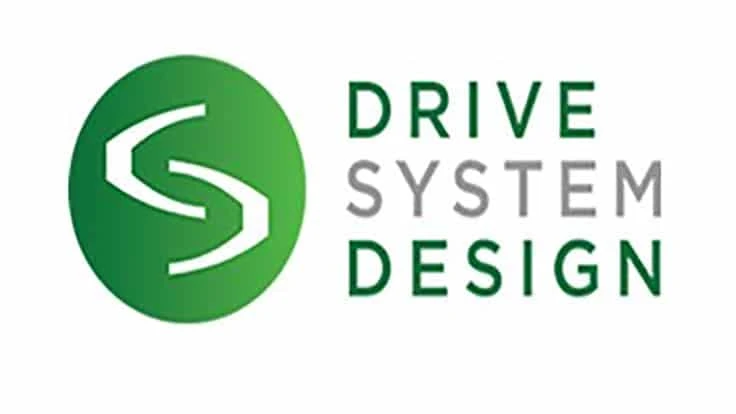
Farmington Hills, Michigan – Drive System Design (DSD), a company specializing in the rapid engineering and development of electrified propulsion systems and associated technologies, has created an open platform inverter from scratch that enables quick and efficient development of motor control systems from initial concept to first prototype.
This inverter solution features reliable and customizable hardware, paired with a flexible, modular plug-and-play software and is being used by DSD to service a range of industries including automotive, commercial vehicle, aerospace, marine and defense.
As a critical component in the application of electrified propulsion to any sector with a need to convert a direct current (DC) source to alternating current (AC), engineers are faced with an array of options when designing an inverter to drive and control an electric machine. By using the DSD open platform inverter, customers gain access to every aspect of the inverter, including the hardware, drivers and software. Additionally, DSD’s engineers teach them how to start developing their own code and configure a motor control solution quickly and easily, significantly reducing project risk.

Customers that utilize DSD’s open platform inverter can realize up to three times the cost and time savings in comparison to starting to build an inverter from scratch.
“One of our core focuses at Drive System Design is to swiftly provide innovative and optimized solutions that leverage our unique systems expertise and enable our customers to walk away with the IP in hand – ultimately providing a turnkey support package,” said AK Arafat, Principal Controls Engineer at Drive System Design. “Initially we set out to create an internal research tool, but soon realized how far ahead our customers could be by taking advantage of our flexible open platform inverter that can accommodate a whole range of motor technologies that off-the-shelf solutions cannot.”
In creating the rapid prototyping unit, DSD incorporated significant additional inputs and outputs (IO) to facilitate development, diagnostics and monitoring. Open access to this IO means that customers can do more than just drive the typical three-phase motor topology, with the additional analog and digital IO providing far more signal monitoring and performance measurement than an off-the-shelf equivalent. The open platform inverter is configured to drive a three-phase machine in standard configuration, but DSD can readily modify the power stage to drive six-phase machines, or even an extra actuator for a park-lock or similar system, by leveraging the flexibility of the control platform.
The modular design approach also has eliminated the need for modifications to the control board and central processing unit, allowing the open platform inverter to be configured for IGBT or SiC applications. Further flexibility is afforded by the AURIX™ TriCore™ microcontroller, allowing safety functions to be implemented within a single device. Ultimately, the open platform inverter enables a rapid and customized solution that overcomes roadblocks that customers typically would encounter when trying to meet the specific needs of their motor and associated system.
Though the original development of the open platform inverter came out of DSD’s work in automotive, it has been adopted for an eVTOL project known as InCEPTion (Integrated Flight Control, Energy Storage and Propulsion Technologies for Electric Aviation), which is led by Blue Bear Systems Research and encompasses a consortium of organizations, including DSD. The goal of the project is to develop a modular and highly integrated electric propulsion unit, and DSD is leveraging a SiC version of the inverter for this application.
“Our inverter technology and expertise has been tested and proven in the automotive space and we are now adapting it for electrified aerospace applications like eVTOL, as well as the defense and marine markets, where we think the speed to market will be a key asset,” said Lee Rogers, Senior Engineer at Drive System Design. “Onboard power generation and other power electronics are becoming even more paramount in the age of electrification and our team of expert engineers is prepared to support customers in each of our core markets in identifying the best solutions to fit their needs.”
Beyond a strong inverter offering, DSD has an in-house team of power electronics and software engineers who complement the company’s expertise in motor and transmission design, simulation and testing. Plans for a dedicated motor test rig in 2022 will further advance DSD’s turnkey capability to deliver motor controls and electrification across a range of markets. The company has also recognized a demand for on-board power distribution in the defense and aerospace sectors, fueling plans to expand its DC-DC converter capabilities in the future.
More information regarding the benefits, key features and specifications of DSD’s open platform inverter can be found at https://www.drivesystemdesign.us/open-platform-inverter/. A look at DSD’s other electrification offerings can be found at https://www.drivesystemdesign.us/what-we-do/electrification/.
About Drive System Design Inc.
Drive System Design (DSD) Inc. specializes in the rapid engineering and development of electrified propulsion systems and associated technologies through decades of experience, turnkey capabilities and unmatched expertise that customers trust. Based in Farmington Hills, Michigan, its globally recognized engineering team works directly and collaboratively with automotive, commercial vehicle, aerospace and defense OEMs, Tier-1s and industry research bodies. The company offers unparalleled proficiency in systems integration, simulation lead design, efficiency enhancement, development testing, and the analysis and control of transmission systems and electrified powertrains.
Latest from EV Design & Manufacturing
- Powering homes with EV batteries could cut emissions, save thousands of dollars
- Meviy introduces stainless steel passivation option for CNC, sheet metal parts
- December Lunch + Learn webinar with Fagor Automation
- December Lunch + Learn webinar with LANG Technik + Metalcraft Automation Group
- EVIO makes public debut with hybrid-electric aircraft
- Redesigned pilot step drill triples performance
- Green Energy Origin expands battery electrolyte manufacturing in North America, Europe
- What’s next for the design and manufacturing industry in 2026?





